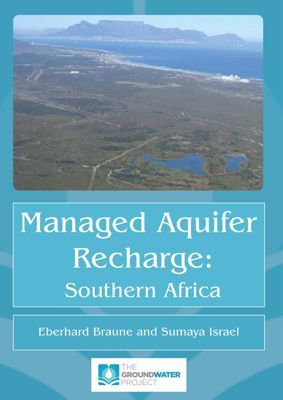Key to the African water crisis, often referred to in international forums, is the large spatial and temporal variability of resource availability, the arid climate prevalent in about 60% of the African continent, and the widespread lack of skilled and experienced human resources to manage the irregular availability of water. Provision of sufficient storage capacity under growing water demand and increasing climate variability is one of the main concerns for water managers in the region in the coming decades. The natural storage in aquifers makes conjunctive use of water resources and artificial recharge of aquifers particularly attractive in the region.
Excellent progress has been made with all knowledge-related aspects and promotion of artificial recharge in South Africa. This has been driven by the Water Research Commission, with its research and development programmes, for nearly fifty years now. Among other projects, it led to the construction of a major borehole injection scheme for the City of Windhoek, Namibia. Windhoek’s MAR (managed aquifer recharge) scheme is of particular interest because it involves large-scale borehole injection and recovery in a highly complex, fractured quartzite aquifer. Implementation in South Africa was helped by the detailed Artificial Recharge Strategy developed by the national Department of Water Affairs and Forestry. With 17 reported cases, South Africa has by far the highest MAR implementation in Africa.
With this as background, six cases are discussed, covering different physical and management environments and recharge methods in southern Africa. They are structured to bring out an understanding of the different driving forces towards the use of MAR techniques, factors that affect the selection of a particular MAR technique, and how efficient and effective various MAR techniques have proven to be.
The main stumbling block to a much greater, systematic roll-out of this technology has been a lack of appropriate governance and institutional development for the sustainable utilisation and management of groundwater resources in South Africa. This has been a failing in Africa in general, despite groundwater’s strategic role as an essential resource to help achieve community development and poverty alleviation.

